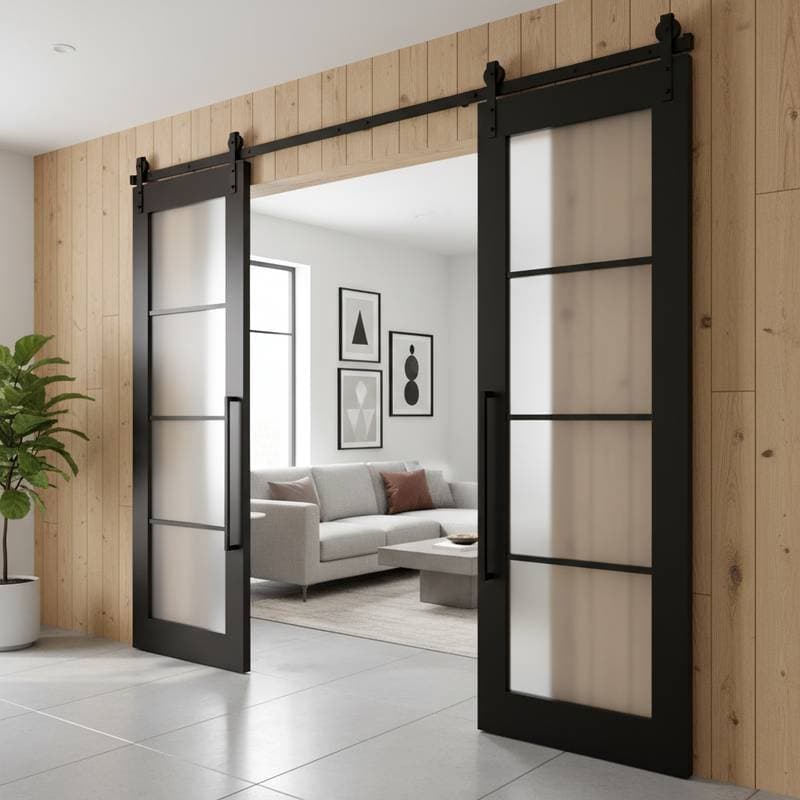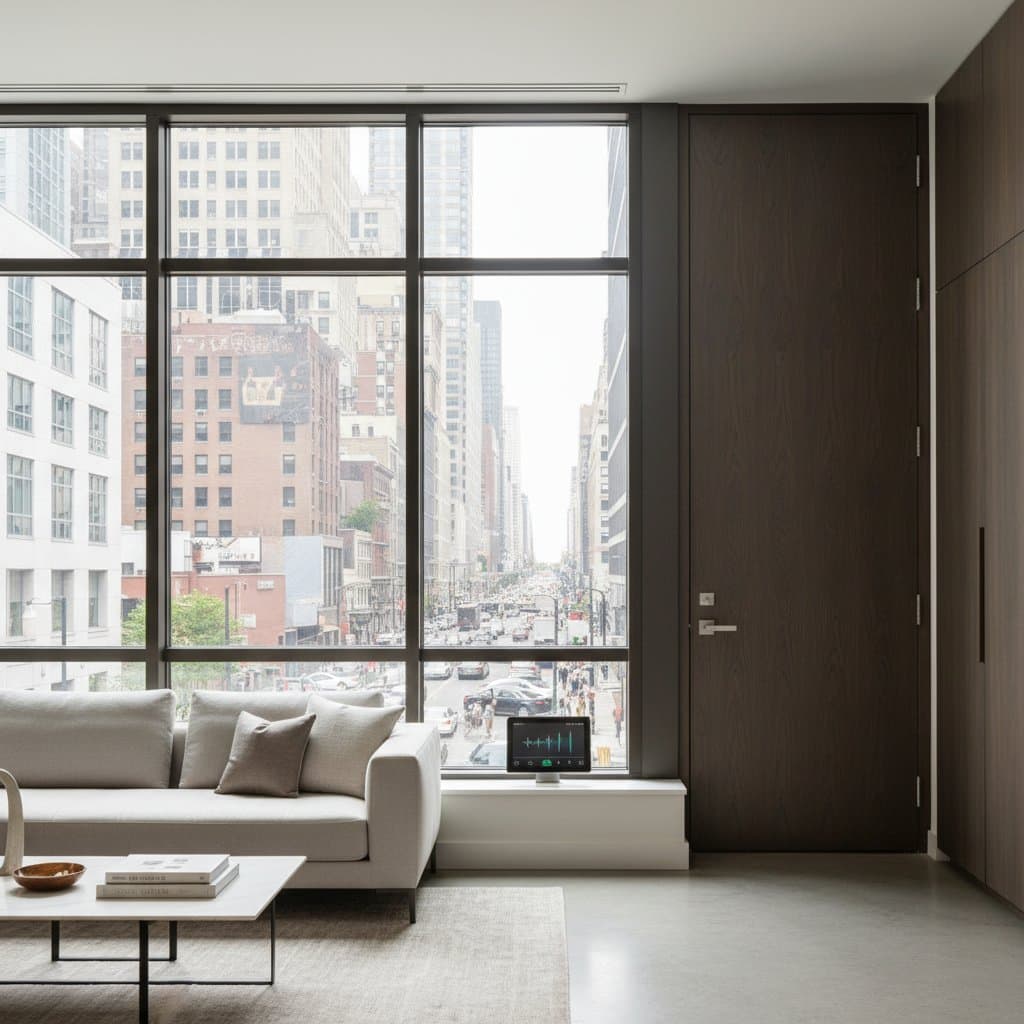Barn Doors on the Decline: Leading Sliding Door Alternatives for 2025
Barn doors gained popularity for their rustic appeal and straightforward installation, yet they now face challenges in fitting modern home designs. The exposed tracks and heavy wood elements that once charmed can appear cumbersome and generate unwanted noise in refined settings. With evolving tastes favoring clean lines and integrated features, innovative sliding doors emerge as superior choices, preserving space efficiency while enhancing overall aesthetics and usability.
Reasons Behind the Shift from Barn Doors
The farmhouse style that propelled barn doors to prominence has given way to more versatile contemporary preferences. Visible hardware, once a statement, frequently disrupts the harmony of sleek interiors. These doors demand substantial wall clearance, restricting options for artwork or storage. Additionally, they offer limited soundproofing and privacy, rendering them unsuitable for quiet areas like bedrooms or home offices. Current trends emphasize subtlety, texture variation, and seamless operation, prompting a transition to sliding systems that align with modern and transitional decors.
Concealed Track Sliding Doors: A Minimalist Essential
Concealed track doors deliver slim profiles, quiet operation, and elegant integration, fulfilling the demand for understated sophistication. Hardware vanishes into the ceiling or header, allowing doors to merge effortlessly with surrounding walls. This approach suits modern and transitional aesthetics, spotlighting natural woods or subtle paints without distraction.
Achieving the Concealed Track Aesthetic
Budget-Friendly Option ($500 to $1,200)
- Select prefinished medium-density fiberboard or hollow-core panels featuring flush surfaces.
- Incorporate surface-mounted tracks with soft-close mechanisms to simulate hidden hardware.
- Restrict glass elements to maintain affordability and ease of setup.
Mid-Tier Option ($1,200 to $2,800)
- Choose solid-core or engineered wood panels in low-luster finishes.
- Install tracks recessed into the ceiling for a streamlined appearance.
- Include discreet pulls in brushed nickel or matte black to enhance subtlety.
Premium Option ($2,800 to $5,000)
- Commission custom solid hardwood panels with built-in handles.
- Employ fully recessed ceiling tracks equipped with soft-close and synchronized movement.
- Align hardware tones with door surrounds, fixtures, and storage for cohesive design.
Materials and Finishes Overview
- Panels: Flat wood veneers, painted medium-density fiberboard, or laminate composites in satin sheens.
- Hardware: Aluminum tracks hidden from view, concealed rollers, and inset pulls.
- Accents: Pair with narrow moldings or direct drywall returns to achieve a borderless effect.
- Color Choices: Neutral tones such as warm white, misty gray, light oak, or soft charcoal for serene elegance.
Practical Maintenance Considerations
These systems need periodic lubrication and track dusting, though protected components minimize dust accumulation. Painted or coated panels clean easily with a damp cloth and hold up against typical indoor humidity without distortion.
Common Pitfalls to Sidestep
- Secure tracks to reinforced structures rather than unsupported drywall to prevent drooping.
- Select matte finishes to avoid highlighting smudges or irregularities.
- Account for sufficient overhead space during recessed track planning to prevent structural modifications.
Glass Pocket Doors: Balancing Light and Privacy
Glass pocket doors merge transparency with seclusion, retracting fully into wall pockets for unobstructed passage. They facilitate smooth room connections and distribute natural light effectively. Options like frosted or textured glass introduce pattern while preserving confidentiality.
Implementing Glass Pocket Designs
Budget-Friendly Option ($700 to $1,500)
- Opt for standard aluminum-framed glass units compatible with ready-made pocket frames.
- Select clear or etched glass for versatile and cost-effective results.
- Apply basic trim painted to match walls for understated integration.
Mid-Tier Option ($1,500 to $3,500)
- Use tempered glass with slender steel or anodized black frames.
- Integrate soft-close pocket mechanisms for fluid gliding.
- Enhance with patterned reeded or tinted glass to add depth.
Premium Option ($3,500 to $6,500)
- Design custom glass featuring engraved motifs or embedded shades.
- Pair with robust wood or aluminum pocket assemblies including hidden floor tracks.
- Incorporate motorized controls for effortless, high-end functionality.
Materials and Finishes Overview
- Glass Types: Etched for discretion, transparent for brightness, channeled for tactile interest.
- Frames: Dark steel, polished nickel, or finished aluminum.
- Tracks: Sturdy pocket enclosures with buffered endpoints.
- Trim: Slim surrounds or wall-integrated edges for fluid lines.
- Color Choices: Pale neutrals, deep grays, metallic sheens, and subtle woods for balanced contrast.
Practical Maintenance Considerations
Routine wiping keeps glass pristine, particularly in busy zones. Sealed frames deter condensation buildup. Annual checks of pocket interiors ensure removal of any accumulated particles.
Common Pitfalls to Sidestep
- Verify wall depth compatibility prior to finishing interior surfaces.
- Assess privacy requirements in communal areas to select appropriate glass treatments.
- Invest in durable pocket hardware to eliminate vibrations or instability.
Wood Slat Sliding Panels: Textured Division
Wood slat panels introduce organic depth to open layouts, using linear elements to define spaces without overwhelming presence. They excel in expansive homes, delineating areas while preserving sightlines and airflow.
Implementing Wood Slat Designs
Budget-Friendly Option ($800 to $1,800)
- Employ medium-density fiberboard slats with realistic wood facings.
- Attach to visible tracks for straightforward assembly.
- Finish all slats uniformly in one color for cohesive flow.
Mid-Tier Option ($1,800 to $3,800)
- Source engineered oak or walnut slats sealed in matte clear coat.
- Add soft-close tracks for refined handling.
- Stabilize with embedded floor channels.
Premium Option ($3,800 to $7,200)
- Craft bespoke hardwood slats with varied gaps for sound absorption.
- Embed low-voltage lighting within panels for subtle illumination.
- Harmonize with adjacent wood elements like wainscoting or built-ins.
Materials and Finishes Overview
- Panels: Full or layered wood in upright slat arrays.
- Hardware: Quiet-rolling tracks, invisible floor supports, and concealed fixings.
- Trim: Taped edges or linear reveals for modern edging.
- Color Choices: Untreated oak, rich walnut, pale ash, or deep ebony.
Practical Maintenance Considerations
Dust slats regularly and apply oil to authentic wood as needed. Layered surfaces require minimal effort beyond surface cleaning. Maintain consistent indoor moisture to safeguard against expansion or gaps.
Common Pitfalls to Sidestep
- Avoid raw wood in moist environments like cooking or bathing areas.
- Space slats adequately to promote circulation and pattern clarity.
- Reinforce mounting points to ensure even tracking over time.
Hybrid Metal and Wood Systems: Refined Industrialism
Hybrid configurations appeal to those retaining industrial edges with polished execution. Metal structures encasing wood or synthetic inserts yield durable, adaptable divisions suitable for city lofts or countryside retreats.
Implementing Hybrid Designs
Budget-Friendly Option ($600 to $1,400)
- Fit prefinished wood inserts into coated steel surrounds.
- Use exposed black fittings for bold yet simple lines.
- Maintain slim panel depths to ease hardware demands.
Mid-Tier Option ($1,400 to $3,000)
- Blend genuine wood layers with lightweight aluminum borders.
- Equip with damping closures and lower guides.
- Accent with pulls in aged bronze or slate tones.
Premium Option ($3,000 to $6,000)
- Create tailored metal casings holding premium wood cores.
- Design multi-panel arrays for broad spans.
- Synchronize tones with architectural details like railings or dividers.
Materials and Finishes Overview
- Panels: Oak, walnut, or textured synthetics mimicking grain.
- Frames: Matte steel, antiqued bronze, or satin aluminum.
- Hardware: Visible or semi-hidden rails as desired.
- Color Choices: Earthy woods offset by bold metallics.
Practical Maintenance Considerations
Metal components endure without deformation, though connections warrant inspection. Exposed wood benefits from periodic renewal based on environmental factors.
Common Pitfalls to Sidestep
- Pair similar metals to prevent differential aging.
- Scale panels appropriately to track capacity.
- Ensure color harmony across connected surfaces.
Selecting and Integrating Your Ideal Sliding Solution
Evaluate your space's needs, from light flow to acoustic control, when choosing among these alternatives. Consider installation logistics, such as wall reinforcements or pocket depths, to avoid future adjustments. These options not only replace barn doors effectively but also elevate daily living through enhanced comfort, style, and efficiency.






